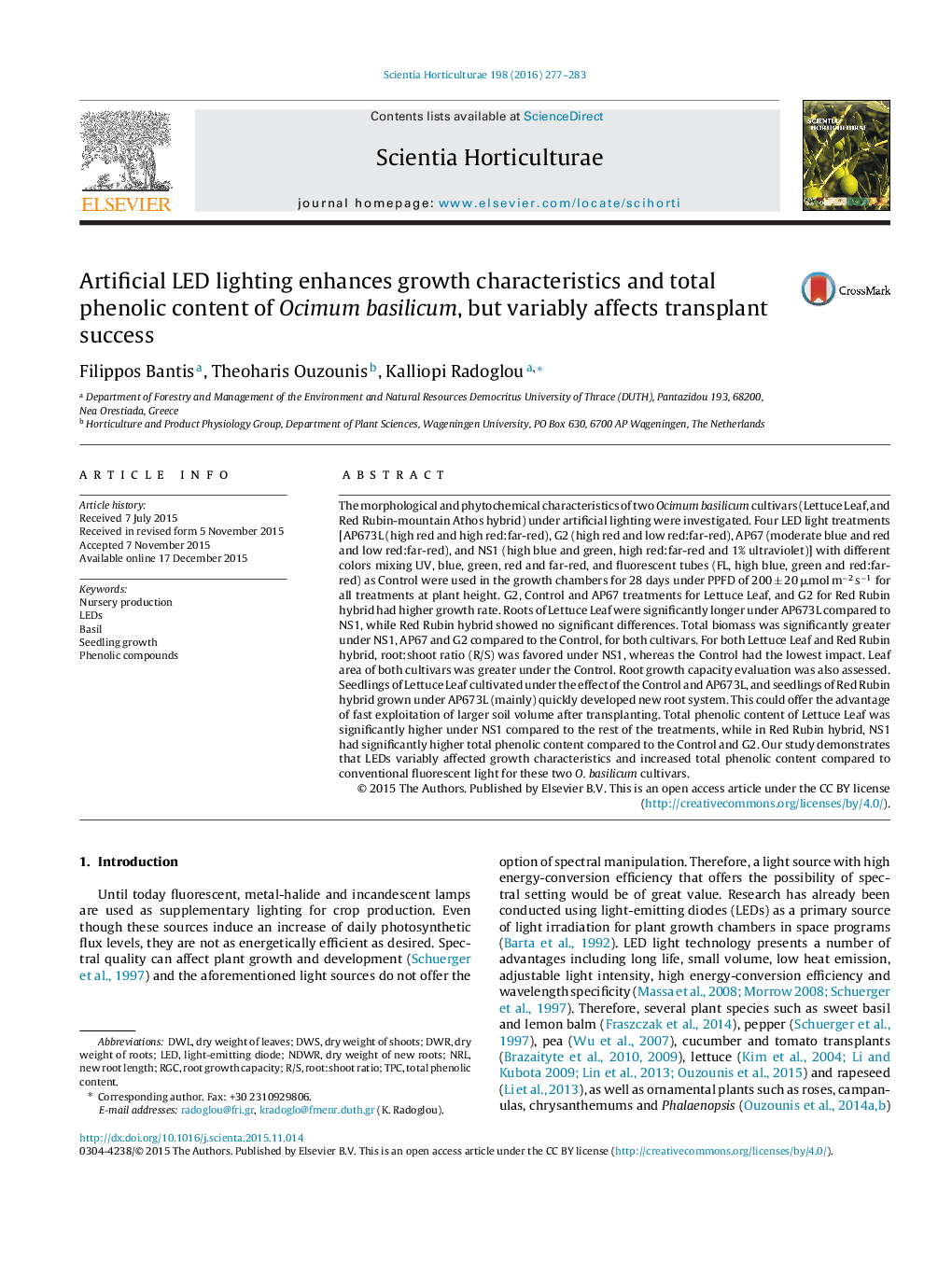| Article ID | Journal | Published Year | Pages | File Type |
|---|---|---|---|---|
| 6406557 | Scientia Horticulturae | 2016 | 7 Pages |
â¢LEDs induce greater biomass production in two basil cultivars than FL light.â¢LEDs increase total phenolic content in two basil cultivars compared to FL light.â¢Root:shoot ratio of both cultivars was greater under LEDs.â¢For both cultivars, root growth capacity was variably affected.
The morphological and phytochemical characteristics of two Ocimum basilicum cultivars (Lettuce Leaf, and Red Rubin-mountain Athos hybrid) under artificial lighting were investigated. Four LED light treatments [AP673L (high red and high red:far-red), G2 (high red and low red:far-red), AP67 (moderate blue and red and low red:far-red), and NS1 (high blue and green, high red:far-red and 1% ultraviolet)] with different colors mixing UV, blue, green, red and far-red, and fluorescent tubes (FL, high blue, green and red:far-red) as Control were used in the growth chambers for 28 days under PPFD of 200 ± 20 μmol mâ2 sâ1 for all treatments at plant height. G2, Control and AP67 treatments for Lettuce Leaf, and G2 for Red Rubin hybrid had higher growth rate. Roots of Lettuce Leaf were significantly longer under AP673L compared to NS1, while Red Rubin hybrid showed no significant differences. Total biomass was significantly greater under NS1, AP67 and G2 compared to the Control, for both cultivars. For both Lettuce Leaf and Red Rubin hybrid, root:shoot ratio (R/S) was favored under NS1, whereas the Control had the lowest impact. Leaf area of both cultivars was greater under the Control. Root growth capacity evaluation was also assessed. Seedlings of Lettuce Leaf cultivated under the effect of the Control and AP673L, and seedlings of Red Rubin hybrid grown under AP673L (mainly) quickly developed new root system. This could offer the advantage of fast exploitation of larger soil volume after transplanting. Total phenolic content of Lettuce Leaf was significantly higher under NS1 compared to the rest of the treatments, while in Red Rubin hybrid, NS1 had significantly higher total phenolic content compared to the Control and G2. Our study demonstrates that LEDs variably affected growth characteristics and increased total phenolic content compared to conventional fluorescent light for these two O. basilicum cultivars.
